Great Lakes gardeners might be feeling as if winter will never end. What's a gardener to do, other than head south? Fortunately, the days are getting longer, winter is on the wane and there are a few flowers in the garden to cheer the soul. February provides a last opportunity to get things done in the garden before the arrival of spring, and a chance to get a jump on next season's garden. It's only 28 days; it will be over quickly.
More regional garden guides
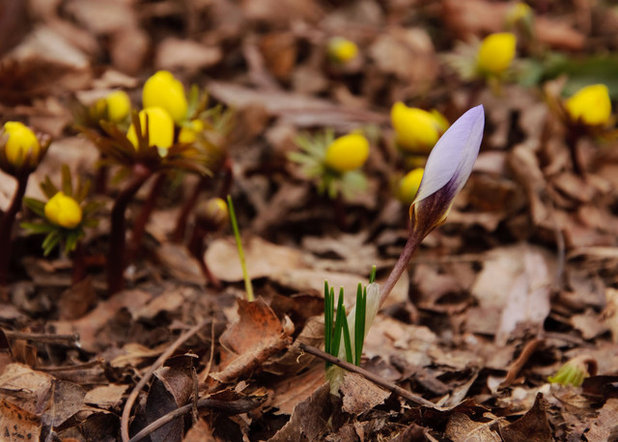
Barbara Pintozzi
Look for early-flowering bulbs. Flowers outdoors in the winter in the Great Lakes garden aren't necessarily the product of a cabin-fevered mind. The earliest of the minor bulbs, such as
Winter aconites (
Eranthis spp) and
snow crocus (Crocus chrysanthus) sprout and bloom when not buried in snow.
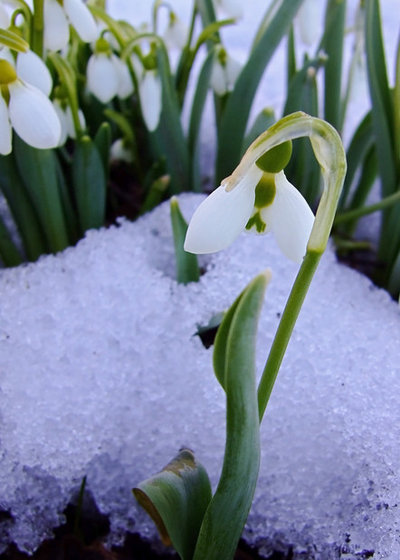
Barbara Pintozzi
Snowdrops (here,
Galanthus elwesii) peek their heads above the snow.
Planting these earliest of bulbs in a warm microclimate will ensure reliable February blooms every year.
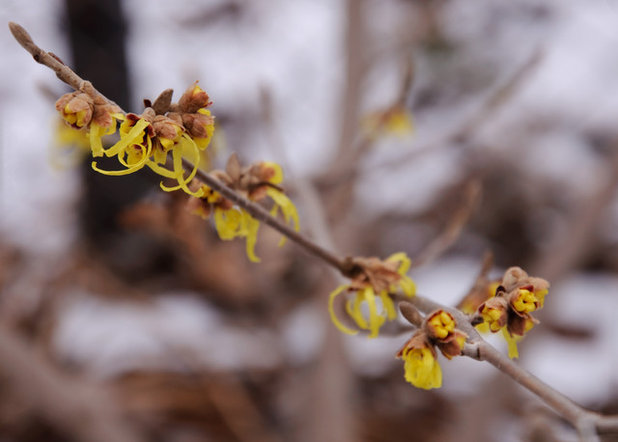
Barbara Pintozzi
Many of the
witch hazels (here,
Hamamelis x intermedia 'Sunburst') start unfurling their strap-like petals on warmer days in February. Some varieties are fragrant. Espaliered against a wall, witch hazel will bloom even earlier.
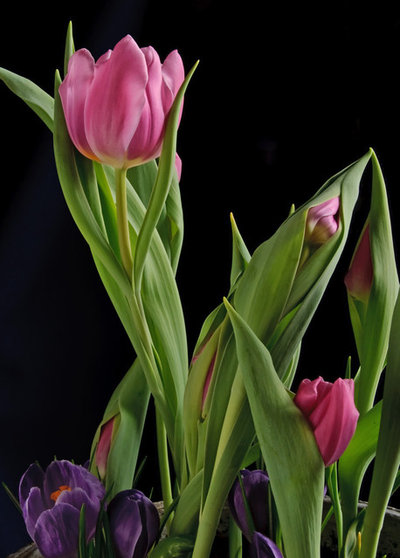
Barbara Pintozzi
Enjoy indoor blooms. Even if the garden doesn't cooperate, there are indoor blooms to dispel the February blahs. All those forced bulbs potted up last fall should be in full bloom now, such as this mixed pot of
'Synaeda Amor' tulips (Tulipa) and
'Flower Record' crocus (Crocus vernus).
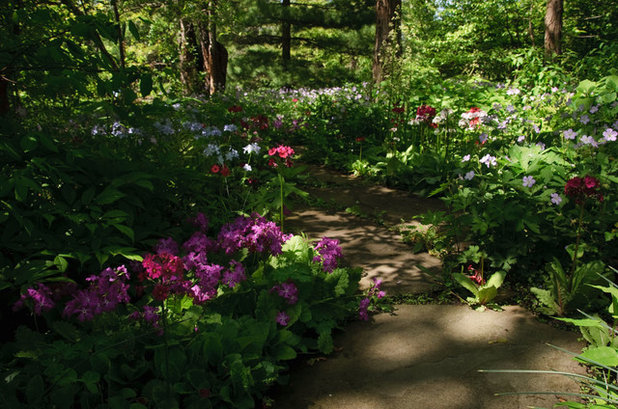
Barbara Pintozzi
Plan for spring. There are things gardeners can do indoors this month to plan ahead for the gardening season.
Order The Garden Conservancy's Open Days Program directory to plan visits to outstanding local gardens. Park Place in Barrington Hills, Illinois, shown here, was open to the public for only one day each in 2011 and 2012, and it would have been a shame to miss it.
Order seeds now so that they arrive in time to get them started six to eight weeks before the last frost date. Procure seed-starting equipment as well so that all will be ready in March.
Unusual, hard-to-find perennials can be ordered online now, with a requested ship date for April, to ensure that your choices are not sold out.
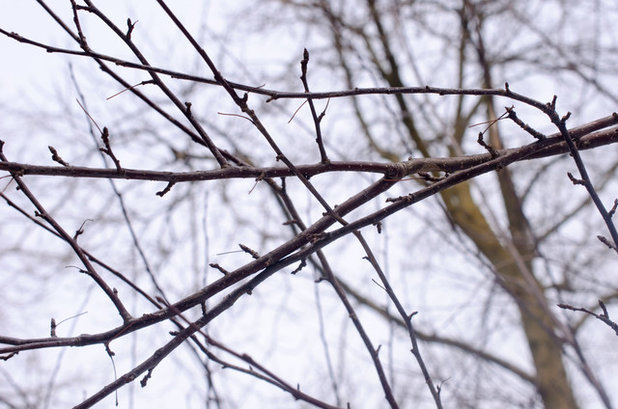
Barbara Pintozzi
Prune woody plants. Gardeners itching to do something out in the garden can sharpen up the pruners. February is the ideal time to shape up dormant woody plants.
Without foliage, the crossing branches of this
crabapple tree (
Malus x 'Prairiefire') are plainly visible, making pruning much easier.
Winter pruning is not recommend for trees that "bleed" in the winter, such as
maples (
Acer spp) or for plants that bloom on old wood, such as
magnolia, forsythia and
lilac (Syringa vulgaris).
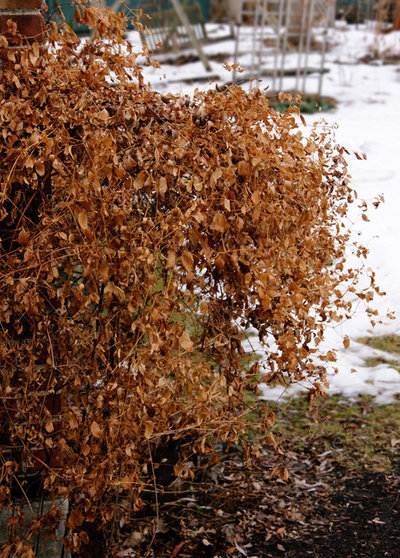
Barbara Pintozzi
Shape clematis. Type III, late-flowering or
Clematis viticella hybrids, such as this
Clematis viticella 'Betty Corning', which bloom on new growth, can be cut back now. Cut the stems back to 1 foot from the ground. Alternatively, where the vine is outgrowing its space, it can be cut all the way to the ground. It is prudent to wait to cut back dead foliage until new leaf buds appear on Type II, early, large-flowering
clematis (usually in March).
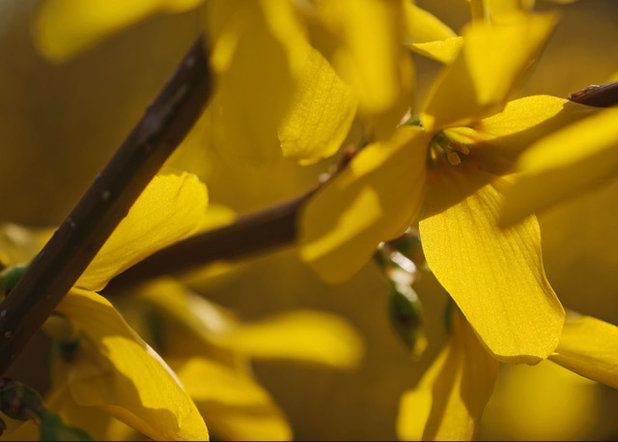
Barbara Pintozzi
Force flowering branches indoors. While you've got the pruners in hand, snip a few branches of forsythia or other early-spring-blooming shrubs, such as
flowering quince (
Chaenomeles sp) and
pussy willow (
Salix sp) to force into bloom indoors for a spring preview. Branches can be forced once the flower buds have begun to swell.
Put the freshly cut branches in warm water, then in room-temperature water the next day, and change the water daily.
Forsythia generally will bloom within two weeks of cutting, but as with any forced woody plant, the closer it is cut to bloom time, the sooner it will open.
Hang in there, spring is almost here.
More regional garden guides





